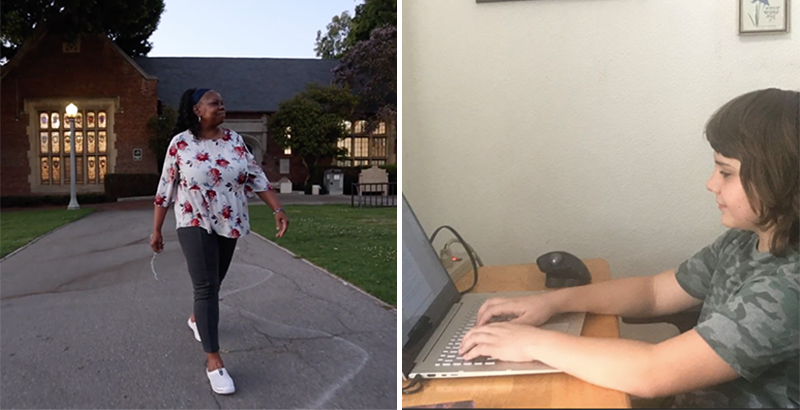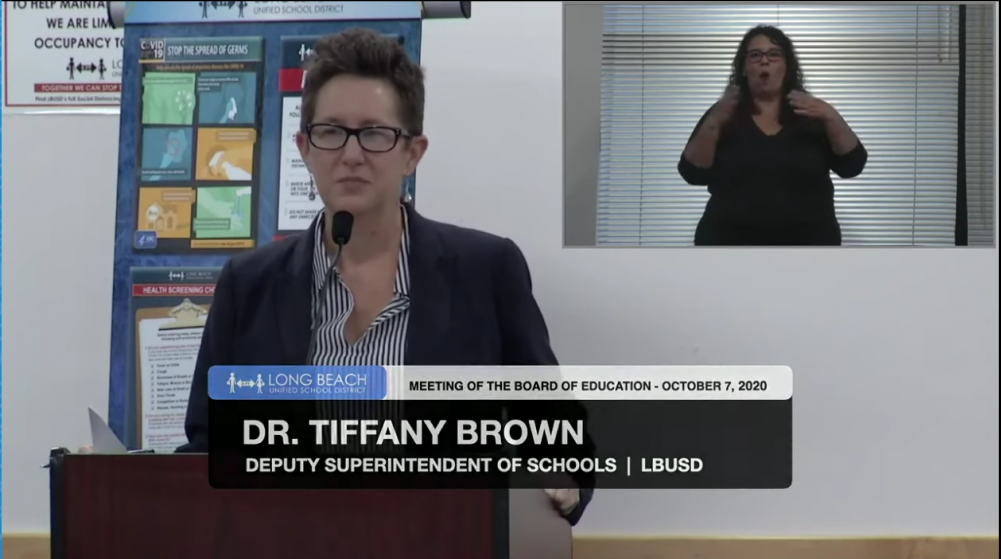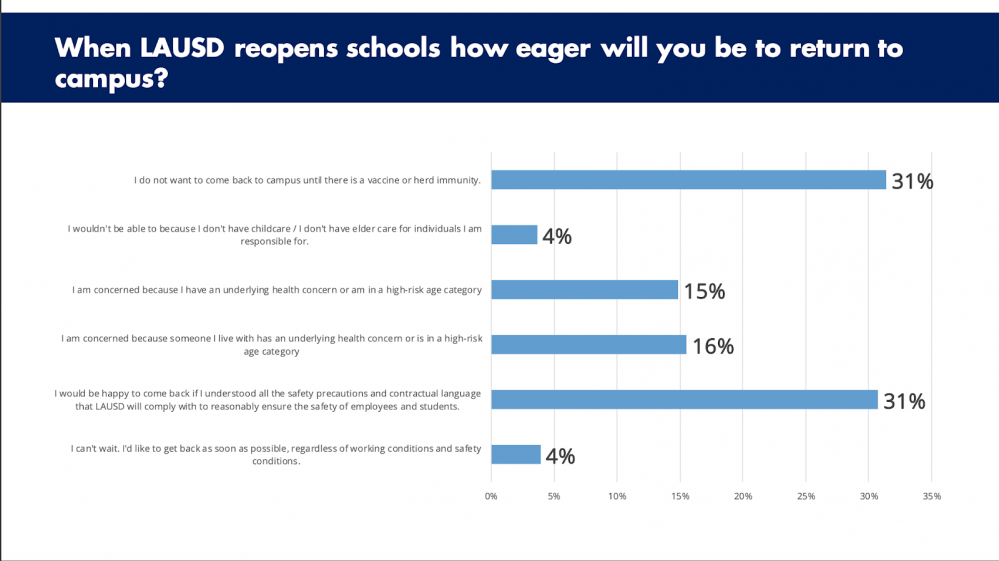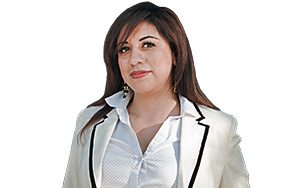L.A. Parents in Desperate Straits with Distance Learning Say It’s Time for the Most Vulnerable Students to be Back in School

Updated, Nov. 2: Los Angeles Unified School Superintendent Austin Beutner announced Monday that the district would start bringing back small groups of students to campuses. Beginning Nov. 9, special education students will begin receiving in-person assessments and instruction and “small, consistent cohorts” of student athletes can start training with coaches outside. Starting that same day, the district will also provide extra supports for students experiencing homelessness and students who are part of the foster care system and will expand supervision of children from high-needs families to provide a safe place to learn and receive meals.
Beutner also asserted that schools should reopen in January. “Seven months’ absence from schools is having real impact on students. It’s time for state and local authorities to work with schools to make sure students and all who work in schools can return safely in January. That’s more than two months away, with a clear plan, consistent commitment and a dedicated focus it can be done.”
As underserved families in Los Angeles experience deep disparities with distance learning, parents and their advocates are urging district leaders to act on state and local guidance that would allow the most vulnerable students to return to campuses.
“Parents, we’re on edge, some are desperate. Even the ones who don’t have to go to a job, they just basically feel like they’re failing their kids because they don’t know how to do the [distance learning] work,” said Mary Lee, mother of a Los Angeles Unified School District graduate with autism and an advocate for other special education parents.
She said it’s time for Los Angeles Unified, California’s biggest school district and the nation’s second largest, to offer some flexibility to parents deeply in need of support and whose children are being hurt most by remote instruction. L.A. Unified serves nearly 600,000 students, 80 percent of whom are low-income. Nearly 25 percent are English learners and 13 percent are students with disabilities.
All schools in Los Angeles County were offered two options for students with the highest needs to receive in-person support: one through the delivery of specialized services to special education students and English learners and another by applying for a school waiver that would bring some of the youngest students back into the classroom. Though these alternatives gave some parents the prospect of relief, they were not as well received by some teacher unions and both the school waiver process and the in-person specialized services have yet to happen in Los Angeles Unified.
Meanwhile, parents’ hopes of a broader school reopening faded further when two LA Unified school board members told the Los Angeles Times Oct. 28 that even January may be too soon to reopen campuses, and neither mentioned either school waivers or specialized in-person services.
There are 80 K-12 public school districts in Los Angeles County serving nearly 1.5 million students. On Oct. 5, the county Department of Public Health began accepting applications for school waivers to allow some schools to resume in-person instruction for small groups of students in grades K-2. Two weeks later, on Oct. 21, L.A. County reported over 100 schools had submitted applications and that only four schools — all of them private — were granted waivers. Neighboring Ventura and Orange counties had been granting waivers since late August.
In early September, L.A. County districts could start applying for permits for schools to provide in-person specialized services and assessments to students with Individualized Educational Programs (IEP) and English learners. Originally 10 percent of a school’s total enrollment could be brought back this way. In late October, the county increased it to 25 percent.
The guidelines for returning some students to the classroom were eased further when Los Angeles County health officials announced Oct. 22 that they would no longer require schools to submit letters of support from their labor unions or groups representing teachers and parents to receive a K-2 waiver.
The move followed L.A. County Public Health Director Barbara Ferrer noting at a Oct. 14 public meeting that most applications received were incomplete and that the vast majority came from private schools, despite the intention that schools with high numbers of students qualifying for free and reduced-priced lunch would be given priority.
As of L.A. Unified Superintendent Austin Beutner Oct. 26’s weekly update, no official district plans had been announced to bring special education students and English learners to campuses or to apply for waivers. This is, in part, because United Teachers Los Angeles has not changed its firm opposition to letting its members provide in-person instruction or services until Los Angeles County moves out of the purple-colored tier— the state’s most restrictive, indicating widespread transmission of the virus. The union has shown support for members who want to volunteer for in-person assessment services and afterschool tutoring, as long as it’s voluntary and “employees [are] allowed to refuse participation or withdraw from participation without reprisal.”
It’s time
Meanwhile parents of students with disabilities and those who were already behind, particularly in disadvantaged Black and Latino communities, continue to struggle to make distance learning work seven months into the pandemic.
An Education Trust- West new statewide poll released Oct. 15, shows that Los Angeles County parents’ satisfaction with distance learning has plummeted since the spring. Only 31 percent of parents who responded to the poll rated their child’s distance learning as successful so far this fall.
The poll also identified 82 percent of parents reporting their own stress as being higher than usual and 63 percent saying their child’s stress was also higher.

A statewide poll in March, when schools were forced to shut down due to the pandemic, found that 57 percent of California parents rated their distance learning as successful, compared to just 35 percent now.
“Despite the fact that everyone was forced to quickly adapt from in-person to distance learning in March, parents — particularly parents of color — are increasingly losing faith in the education that their children are receiving,” Dr. Christopher J. Nellum, deputy director of research and policy at The Education Trust–West, said in a public statement. “While parents initially were optimistic about schools’ approach to distance learning, parents want to see a renewed urgency from schools, districts, and policymakers.”
Lee, the L.A. Unified special education parent advocate, believes students with disabilities should be receiving in-person specialized services by now.
“They are not only regressing academically, but in their social-emotional behavior. They learned to manage their behavior in school so now they are home, it’s not easy for the child, and is overwhelming for the parents,” she said. “Because in their mind, mom is mom. Mom is not their teacher.”
A L.A. Unified spokesperson said Oct. 22 that the district is “developing plans on how students — including those with special needs — can return to the classroom in the safest way possible.”
“There is no question that being in the classroom is the best option for all students, but especially for those with special needs,” she said.
Virginia Justice said she has not heard if her son’s elementary magnet school in the San Fernando Valley is planning to apply for a waiver, but she would support it.
“I think it’s time. The district has had at least four months to prepare to reopen safely,” she said of LAUSD. “It’s time for the district to present us a plan. We need to know it.”
She said her son Thomas keeps asking her, “why hair salons, restaurants, and other businesses keep reopening while schools remain closed. He told me once, ‘So maybe schools are not that important, right?’ I’m concerned that’s the kind of message we are sending to our kids.”
Sandy Mendoza, director of advocacy with Families in Schools, said school waivers are something, “most families are willing to do or entertain the idea of at the very least. I think that when you look at special needs children or the issue of parents who don’t have child care providers, then (you see) they have no choice.”
When the Los Angeles County Board of Supervisors, the county’s governing body, unanimously approved the school waivers process on Sept. 29, UTLA questioned the feasibility, saying the board, “should hold school safety plans to a very high standard before granting any waivers — a standard that may be impossible for schools to achieve, given the grotesque underfunding of California public schools.”
Students already back in other L.A. County districts
Other Los Angeles school districts have openly talked about the waiver application process and about starting to bring English learners and special education students to campus for in-person assessments.
Downey Unified, a school district located about 10 miles southeast of Los Angeles, which serves a similar student demographic as LA Unified but on a much smaller scale, began doing so at all of its 20 schools in early October. Thirteen percent of the district’s enrollment are special education students.
“We already started bringing in students. There was no waiting period. County officials did walkthroughs to almost every single school campus to check that we’re in compliance with nearly 15-page safety protocols, including signage, and they were very happy with what we had in place at our school sites,” said Ashley Greaney, Downey Unified’s public information officer.
In a recent update, Downey Unified Superintendent John Garcia said the district was not planning to apply for K-2 waivers because its board “came to consensus that we will be inviting all of our students back (to campuses) on January 4th, hopeful we will be in the red-tier (less Covid positive cases) by then.”

Long Beach Unified, California’s third-largest school district, also announced during an Oct. 7 board meeting it will be bringing special education students back to campuses for assessments, and that it will begin talks with its teachers union for waiver applications.
“We’re collaborating with our labor partners, and we would still want their support for any reopening waiver application,” a Long Beach Unified spokesperson said after the county health department dropped that requirement. “We don’t have a pending waiver application here, though we continue to explore that option.”
On Oct. 23, UTLA released results of a membership survey on distance learning and schools reopening, showing that 31 percent of L.A. Unified teachers do not want to return to campus until there is a vaccine, while the exact same percentage would be happy to return now with all safety precautions in place.
The survey also found that 47 percent of members trust the union “a lot to make good decisions” about school reopening, while 32 percent trusted the county and only 5 percent trusted LAUSD.

Union president Cecily Myart-Cruz shared the survey’s findings Oct. 16 via Facebook live, reporting that while no formal proposals have been presented yet by either side about bringing back special education students and early learners, “we are having these discussions with the district , so when science tells us that it’s safe to return we will be ready to do so.”
California’s health authorities recently reported that those schools that have reopened so far had not contributed to a rise in COVID-19 cases. “We have not seen a connection between increased transmission and school reopening or in-person learning,” California Health and Human Services Secretary Mark Ghaly said at an Oct. 6 press conference.
Latino and Black students make up over 80 percent of LAUSD’s student population and the vast majority of those students live in communities hardest hit by the pandemic.
If reopening were solely based on the rate of COVID cases, that would leave these communities at a disadvantage since most of their family breadwinners are essential workers facing a higher level of exposure to the virus, said Maria Elena Meraz, who co-founded The Parent Engagement Academy, a nonprofit that promotes parent involvement in school districts across Los Angeles County.
Meraz, who works primarily with Latino parents, said distance learning has been “an incredible burden for parents in this community,” because of the language barrier, poor access to technology and lack of basic literacy.
“Distance learning has turned the achievement gap into an achievement abyss for these children,” she said.
Get stories like these delivered straight to your inbox. Sign up for The 74 Newsletter

;)
